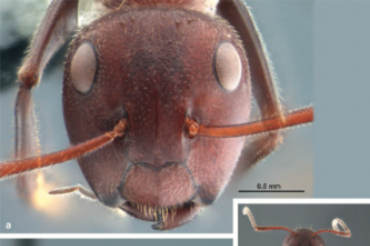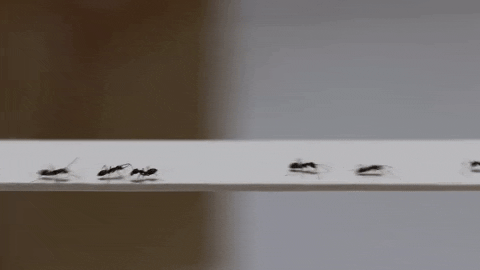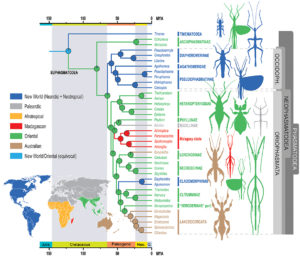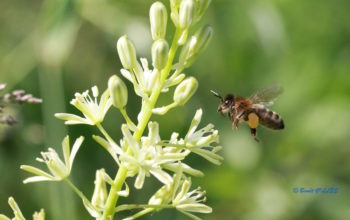In the already surprisingly diverse world of ants: morphology, behaviour, adaptation and ecology (read these articles Cataglyphis ; Atta ; Eciton ; Cephalotes ; Force), is added the description of a new species to the capacity of the most singular, that of being able to be literally exploded as a means of defense ! Described earlier this year by two Austrian entomologists, Alice Laciny and Herbertt Zettel, the species was logically named Colobopsis explodens.
Classification
This new species found in the tropical forests of Borneo, Thailand and Malaysia belongs to a group of monophyletic species, that of Colobopsis cylindrica (COCY) or C. saundersi (Emery, 1889). This group is also called vernacularly “explosive ants” because of the ability of workers to sacrifice themselves during territorial fights by deliberately blowing up their glove integuments (autothysis) and releasing irritating and sticky elements by their hypertrophied mandibular glands to kill or repel the enemy.
The COCY group has been the subject of ecological, morphological and chemical studies for about ten years. In 2014, a multidisciplinary team began a research program to explore the evolution of autothysis. For this, scientists studied 15 species at the Kuala Belalong Fields Studies Center (KBFSC) in Brunnei. It is in this context that molecular and taxonomic analysis of a species with bright yellow mandibular secreting glands – discovered near the KBFSC centre – revealed that it was a morphotype (specific morphological traits) of a species not described: Colobopsis explodens.
The researchers were interested in this ant by chance: it had a more pronounced defensive behavior and was the most abundant on the periphery of the center.
Morphological description
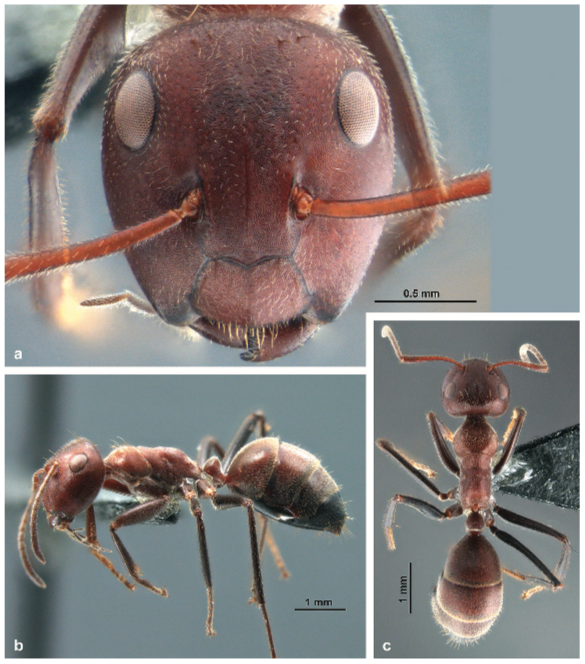



Biology & ecology
C. explodens colonies were discovered in Ulu Temburong National Park (map opposite). These ants are polygynous (several queens within a colony) and polydomes (distributed between several nests). The nests of C. explodens, which may harbour several thousand individuals, are most often found in trees of the Dipterocarpaceae family (grouping 70 species in Asia).
The network of nests studied extended both in the canopy, between 25 and 60m high, and on the ground, between several species of trees over an area estimated at nearly 2 500 m2. For the experiment, 4 of them were sampled and installed in artificial nests for several weeks. Daytime foraging activity could be detected, mainly between 9am and 4pm when the temperature is at its highest (24-28.6°C).
A colony of C. explodens is composed of several worker castes, where the minor forms (the smallest ants) are the most abundant and the major forms, the least numerous, almost never leave the nest. It is the Minor caste that sacrifices itself by releasing a gooey yellow liquid with a spicy smell.
The feeding of these ants remains partly unknown. It has been observed, in natura, that Minor spend long periods patrolling and clearing the leaf surface of numerous debris and other small arthropods, and “grazing” on epiphytes (mosses, lichens, algae, fungal filaments) with their mandibles, sometimes for nearly an hour. These behaviours may be related to ant nutrition. In vitro, ants agreed to eat small dead insects and fruits that scientists offered them.
Genetic analysis of the contents of the mandibular secreting glands of minor Colobopsis explodens revealed the presence of bacteria of the genus Blochmania sp. (Gammaproteobacteria), symbionts found in ants Camponotus sp. (called carpenters).
Scientists indicate that the description of the autothysis mechanism, the composition of the mandibular secreting glands, the association microorganisms/COCY and the nutrition of C. explodens will be the subject of future publications…
Case to follow !!
Source :
>
- Laciny A. ; Zettel H. ; et al. (2018) : Colobopsis explodens, model species for studies on “exploding ants”, with biological notes and first illustrations of males of the Colobopsis cylindrica group. Zookeys 751:1 1-40 (lien)
Recommendations for books on this theme
- Ants: Behaviour, Social Organization and Evolution
: Luc Passera – Canadian Science Publishing – 480 pages – January 2005
- The world of ants
: Rémi Chauvin – Editions du Rocher – 285 pages – October 2003
- Fourmis de France. Plus de 100 espèces décrites
: Rumsais Blatrix ; Christophe Glakowski ; Claude Legas – Editions Delachaux&Niestlé – 288 pages – mai 2013

